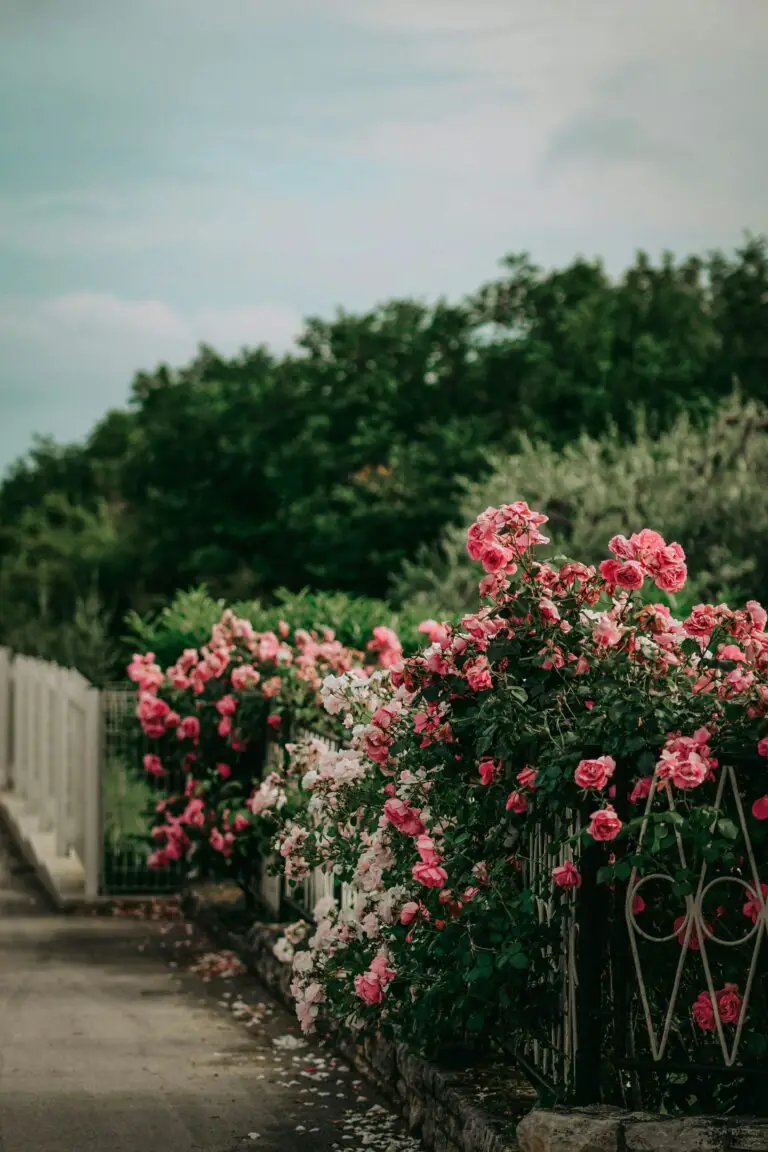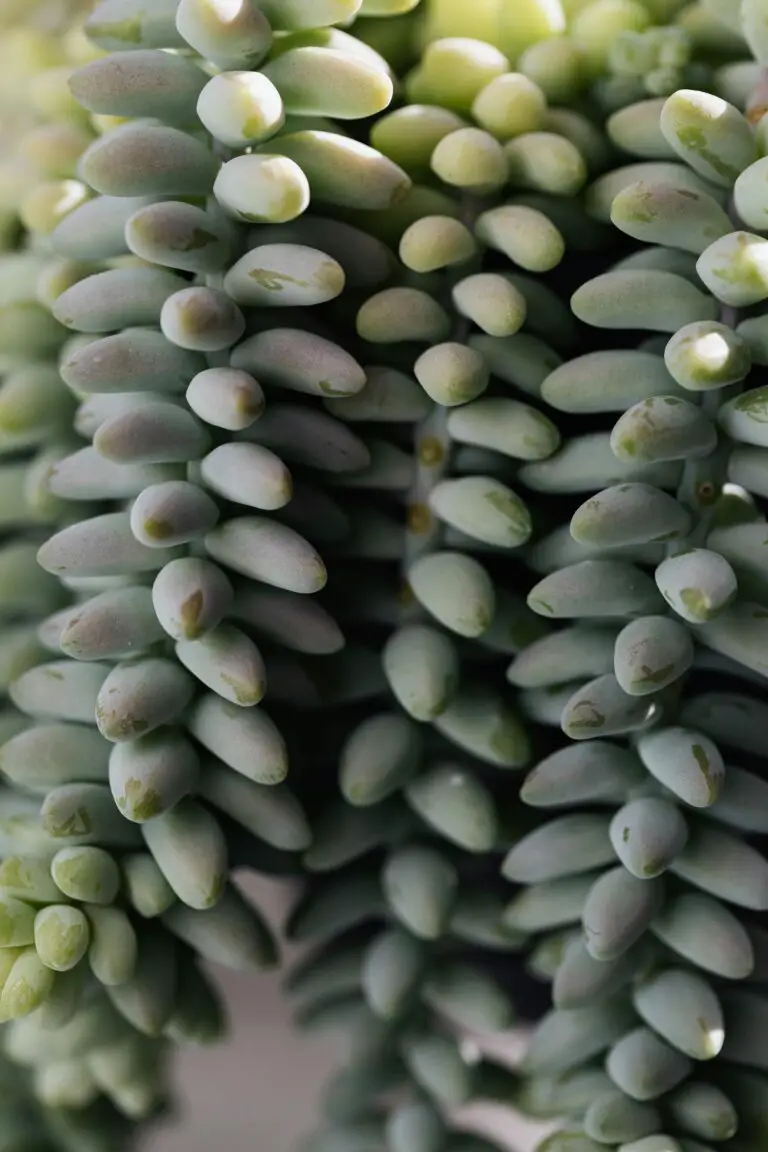An Introduction to Sedums
Let’s dive into the world of sedums, shall we? These plump, versatile succulents are like the Swiss Army knives of the plant kingdom. Consider them the unsung heroes in your garden, unassumingly bringing a burst of joy and color to the landscape. They’re not just pretty faces either; they’re tough as nails, shaking off whatever Mother Nature throws at them—be it bone-chilling winters or sizzle-your-skin summers!

Why do gardeners tip their hats to these hardy beauties? For starters, sedums come in an eye-popping variety of shapes, sizes, and hues. Picture this: a rainbow of sedums spilling over the edges of pots, forming plush ground covers, or standing tall in a stately border. But it’s not just their good looks that make them cherished; it’s their roll-with-the-punches attitude, shrugging off pests, diseases, and drought like it’s no big deal. No wonder they’re a staple for gardeners who appreciate a low-maintenance charmer that still manages to turn heads!
If you’re itching to learn more about these endearing plants, check out our piece on unlocking the charm of sedums. You’ll get the scoop on why these succulents are adored by green thumbs everywhere!
General Characteristics of Sedums
When thinking of sedums, imagine a symphony of structural diversity. Some sport tight rosettes that could easily be mistaken for artichoke hearts, while others flaunt star-shaped flowers that twinkle in the garden like a little constellation. They’re not damsel-in-distress types; these plants are self-reliant, asking little of you but giving so much in return. They’ll thrive in that sandy spot where nothing else will, or on that rocky slope you thought was destined to stay bare. In short, sedums are the friend you didn’t know your garden was missing—reliable, stunning, and effortlessly cool.
Understanding the Sedum Life Cycle
Imagine witnessing a sedum’s journey, reminiscent of a ballet: sprouting with vigor, growing with grace, and culminating in a floral crescendo. This perennial pageant begs to be understood, so let’s unravel the sedum’s lifecycle and turn our sights to its tantivy blooming phase. From tender sprouts to vibrant blossoms, sedums quietly script their own thriving narratives.
The prologue of our story begins underground, with the eager emergence of green sprouts as winter wanes. Sedums, with their succulent leaves, begin life with a slow, steady tempo, often mirroring the patience of a gardener coaxing them from soil. As the season progresses, a crescendo of growth unfurls—stems stretch skyward, leaves plump with stored water, and the plot thickens. This is but the prelude to the star act: the flowering period.
When warmth suffuses the air, our sedum performers take their cue. Come summer, they adorn themselves with buds that burst into starry blossoms, attracting a bustling audience of bees and butterflies. Each cluster of flowers is a bouquet in the limelight, with colors ranging from the softest pinks to fiery reds. This spectacle is not to be missed – dive deeper into the sedum story and learn how these resilient plants command such a display year after year.
Curious about how these botanical artists prepare for their floral showcase? Understanding the timing of sedum blooms hinges on factors like variety and climate. For example, the ‘Autumn Joy’ sedum unfurls its rosy clusters as summer wanes, while ‘Stonecrop’ sedums may dazzle with their performance earlier in the season. Keen gardeners often turn to resources like gardenerspath.com for inspiration and guidance on sedum care and tips to ensure a spectacle of blooms.
Wonder how sedums look when they flower? Feast your eyes on this visual treat:
Ultimately, it’s not just the timing that’s crucial, but also the dance of care sedums receive. Whether basking in full sun or weathering a drought, they continue to express their artistry through blooms, revealing nature’s resilience. So next time you spy a sedum, remember you’re witnessing a live performance that’s been perfected over countless seasons.
The Blooming Season of Sedums
So, just when do sedums grace us with their vibrant flowers? Sedum enthusiasts, get your gardens ready because these beauties typically burst into color from late spring to early fall. It’s like a season-long parade of blossoms! However, not all sedums are the same – oh no, some like to surprise us earlier, while others wait until the fall to show off. It’s all about the variety and, of course, where you’ve planted them.
Talk to any seasoned gardener, and they’ll tell you that sedums are as reliable as the old truck that’s been in the family for generations. They’re hardy, drought-resistant, and some might even say they thrive on neglect – though a little TLC never hurts. For instance, the popular ‘Autumn Joy’ sedum doesn’t get its famous rusty-red flowers until late summer or fall, while the ‘Dragon’s Blood’ sedum lays out its red carpet of blooms in the spring.
Climate plays a role too; sedums in warmer regions often show off their blossoms a tad earlier than their cousins in cooler areas. It’s nature’s way of spreading the joy, right? Whether you live in a hot southern state or enjoy the crisp northern air, these succulents are sure to adapt and flourish. Inspiration for succulent gardens is everywhere, showcasing the versatility and resilience of sedums in various landscapes.
But wait, what can you expect in your own backyard? Let’s say you’ve planted a bunch of these succulent wonders. As the days get warmer, keep an eye out because the magic starts with little buds that gradually swell up, hinting at the spectacle to come. And when they finally open, it’s a kaleidoscope of colors – from starry whites and pinks to deep reds and purples. It’s not a one-day show either; these blooms stick around, adding color and texture to your garden throughout the season.

Remember, sedums are a diverse group. With over 400 species, including ground covers like ‘Cape Blanco’ and upright cultivars such as ‘Matrona’, the blooming season can vary significantly. Rest assured, though, there’s a sedum out there that’s eager to flower in your garden at just the right time. How’s that for being accommodating?
Factors Affecting Sedum Flowering
Ever wonder how your neighbor’s sedums are blooming with such vibrant colors, while yours seem a bit, well, lackluster? The secret is understanding the factors that influence these succulent beauties to put on their best display. Let’s dig into the details!
Sunlight: The Ultimate Energy Drink for Sedums
Think of sunlight as the ultimate energy drink for your sedums. These plants are sun worshippers and need a good dose of it to create those stunning blooms we all love. They typically require at least 6 hours of sunlight a day. Just like us with our morning coffee, sedums use sunlight to kick-start their day and fuel the flowering process.
Watering: Less is More
When it comes to watering, sedums prefer the ‘less is more’ approach. They’re the camels of the plant world, storing water in their leaves and stems. Overwatering can lead to soggy roots and a lackluster bloom — nobody wants that! Remember, your sedum is more marathon runner than sprinter; it saves up its resources to go the distance to flowering time.
Temperature: Warm Days, Cool Nights
Sedums enjoy the same kind of temperatures that make a perfect spring day. Warm (but not too hot) days and cool nights are ideal. This kind of temperature swings from daytime warmth to cooler nights can actually encourage better blooming. It’s like nature’s way of telling sedums, “It’s time to show off those flowers!”.
Soil: The Foundation of Life
Soil is the unsung hero of the flowering world. For sedums, well-draining soil is a must. Imagine wearing wet socks all day — pretty uncomfortable, right? Sedums feel the same about wet roots. A blend of potting soil, coarse sand, and perlite mirrors their natural rocky habitats and makes for happy, blooming plants.
Now, have you ever seen a sedum in action? Check out this fascinating video on how factors like those we’ve just talked about can affect sedum flowering. It’s like having a backstage pass to the show of the year!
Around the globe, gardeners with green thumbs use these insights to their advantage. Whether it’s the sedums thriving on a sunny slope in South Dakota or the ones adding pops of color to a Tokyo rooftop garden, the principles are the same. Get these factors right, and you’re well on your way to sedum success. Let’s turn those green thumbs up for vibrant sedum flowering!
Caring for Sedums to Encourage Flowers
Got a soft spot for succulents? Sedums are your dream come true! Picture this: a sunny rockery peppered with plump, juicy leaves, crowned with vibrant star-shaped flowers. To transform this vision into your garden’s reality, let’s dish some dirt on how to pamper your sedums for peak performance.
First off, timing is everything. Sedums, being the sun worshippers they are, typically bloom from late summer into fall, just when other flowers might be waving goodbye. The fireworks start when the days begin to shorten. But to ensure your sedums are ready to put on a show, you need to prep the stage early in the season.
Let’s talk hydration. These hardy succulents are drought-tolerant, but they don’t want to be left high and dry. To strike the right balance, water them deeply but infrequently, allowing the soil to dry out between watering. Overly wet feet can lead to root rot—a sedum’s sworn enemy.
Now onto the buffet—feeding time. Sedums aren’t fussy eaters; a sprinkle of a balanced, slow-release fertilizer in the spring can do wonders. It’s like brunch for your blooms. Too much, though, can cause floppy growth—we want sturdy stems that stand proud, after all.
Light is to sedums what a stage is to a singer. These plants bask in full sunlight. Too little light, and they’ll stretch out awkwardly, like a teenager in a growth spurt. Plant them where they’ll soak up at least six hours of sunlight a day, and they’ll thank you with a symphony of flowers.
Pruning isn’t just for the barbershop. With sedums, a little snip in early summer can lead to fuller, more compact plants. It’s like training a bonsai—trimming here and there to create a living masterpiece that’ll captivate any garden visitor.
Of course, location is key. Just like us, sedums thrive in the right environment. Plant them in well-draining soil with a pH close to neutral. Rocky or sandy beds? Perfect. They’re like the beachgoers of the plant world, relishing gritty, airy soils where their roots can breathe easy.

Picture the envy of your neighbors as your sedums steal the spotlight come late summer. With these tips, your gardening will be less about the ‘green thumb’ and more about the ‘sedum savvy’. Remember, treat them right, and sedums will repay you with a kaleidoscope of color that extends the garden party well into sweater weather!
Popular Sedum Varieties and Their Flowering Times
Like an artist’s palette, the world of sedums offers a spectrum of vibrant blooms, each with its own tempo of color and life. The family of sedum plants is incredibly diverse, so let’s dive into this botanical concert and discover the unique flowering schedules that make gardeners and bees alike mark their calendars with anticipation!
Begin your sedum soiree with the beloved Sedum spectabile, a classic that struts its stuff from late summer to frost. Picture its star-shaped flowers in shades of pink and mauve, creating a pastel cloud that begs for a bumblebee ballet. It’s not just a pretty face, though; this sedum is tough as nails, shrugging off cold snaps with the grace of a winter queen.
Next up, the Sedum telephium, often referred to as ‘Autumn Joy’, doesn’t jump the gun. It patiently waits until late summer to unfurl its rosy-pink bloom clusters. As the days shorten and the crispness of autumn nips at the air, this sedum’s flowers deepen, painting the garden with warm burgundy hues that stand out against the falling leaves.

Not to be outdone, Sedum acre bursts forth in early summer, its golden-yellow blossoms like a carpet of sunshine. Its common name, ‘Goldmoss’, says it all. This variety is a true sun worshipper, relishing in the longest days of the year and turning rocky crevices into its stage for an extravagant floral display.
Among the evergreen trailblazers, the Sedum rupestre ‘Angelina’ lends its lemony zest to the summer scene. Imagine its spiky yellow flowers rising amidst the stonecrop’s sea-green foliage, a combination that’s reminiscent of frothy waves tipped with sunlight sparkling on a coastal retreat.
Finally, let’s not forget the moody beauty of Sedum spathulifolium ‘Cape Blanco’. With opulent silver foliage, this sedum saves its floral fireworks for the heat of midsummer, unleashing clusters of starry white flowers that weave a tale of elegance amongst the more boisterous blooms of the season.
From the bright pom-poms of yellow that adorn the Sedum reflexum to the ruby red inflorescences of the Sedum ‘Voodoo’, the flowering times of these sedum varieties form a timeline of visual delight throughout the growing season. Each performance offers a unique resonation that enhances the garden’s dynamic rhythm, ensuring that there’s never a dull moment in the passionate play of sedums.
Incorporating Flowering Sedums in Your Garden Design
If you’re thumbing through garden catalogs or scrolling through images of eye-catching succulents, chances are you’ll be smitten with the charm of sedums, often known for their vibrant and prolonged blooms. But beyond their beauty, let’s talk about how to time these succulent sirens and strategically integrate them into your garden design to create a visually spectacular display that will be the envy of any plant enthusiast.
First, consider the rhythm of your garden: Do your current plants have a solo moment, or is the whole band playing at once? Sedums can be your garden’s rhythm section, providing a steady backbeat of color from late summer into fall—when most other flowers have bid adieu. Timing their bloom can be as easy as selecting varieties with staggered flowering times. Grab a pen and notepad, because early-blooming species like ‘Matrona’ or ‘Carl’ could start their performance by midsummer, while ‘Autumn Joy’ and its relatives wait for the cooler days of fall to begin their show.
Now, let’s move on to the design itself. Think of sedums as your versatile set pieces in the theater of gardening; they can play both lead and supporting roles. Want a glorious focal point? Cluster your sedums together for an impactful mass of blossoms. Or, to achieve a touch of whimsy, dot them among your perennials and grasses, creating pops of color that draw the eye and lead it across the landscape.
But how about real-life examples, you ask? Picture this: a serene rockery, all stone and thrift, suddenly punctuated with the rosy hues of ‘Dragon’s Blood’ sedum, creating a striking contrast that’s hard to ignore. Or a cottage garden, already a symphony of shades and shapes, with ‘Neon’ sedum’s electric-pink flowers adding a dash of effervescent brightness just when other blooms might be fading. The options are as limitless as your imagination.
And don’t forget the pragmatics. Aligning your sedum’s flowering time with your local climate and planting in a spot that matches their sun and soil needs is crucial. They’re like botanical sun-worshippers, thriving in the sun-baked spots where other plants might falter. Give them the right stage, and these stars will shine.
Finally, let me give you a visual: Dive into the world of garden design with sedum by watching this inspiring video. It will show you just how versatile and impactful these succulent stars can be when it comes to transforming your green space into a vibrant tapestry of textures and hues.
Remember, with sedums, you’re not just planting flowers; you’re composing a living masterpiece that will evolve with the seasons. So go ahead, let sedums take your garden design to the next level and watch in delight as these succulent blooms become the crescendo in the symphony of your garden’s year.
FAQs on Sedum Flowering
Gardeners, let’s dive into the vibrant world of sedums! Often praised for their hardiness and delightful blooms, sedums are the go-to for a low maintenance splash of color in your garden. But when can you expect these succulent beauties to flower? And what care tips can ensure they thrive? Let’s answer these budding questions!
When Do Sedums Typically Begin to Flower?
It’s like clockwork, come late summer or early fall – sedums start showing off their blooms. These resilient plants are known for their punctuality in the garden calendar. Whether it’s the ‘Autumn Joy’ or ‘Matrona’, wait for the weather to warm up and you’ll soon see a festival of flowers on your sedums. Picture this: as summer’s fiery heat begins to mellow, your sedums come alive, exploding with color, just when many other plants start to fade!
Caring for Your Sedums for Optimal Blooming
If you’re eyeing those lush, picture-perfect sedum gardens, remember, these plants are sun worshippers. Plant them in a spot where they’ll bask in full sunlight and watch them bloom with gusto. Then there’s watering – or rather, the lack of it. Sedums are drought tolerant; overwatering could leave them less than happy. Top tip: water sparingly and let the soil dry out between waterings. They crave that ‘tough love’!
Troubleshooting Common Sedum Issues
What if your sedum’s performance is more ‘meh’ than ‘wow’? First, let’s ensure you’re not loving them to death with too much water. Next, have a look at their sunbathing routine. These plants need at least 6 hours of sunlight to strut their stuff. Also, be mindful of the ‘overcrowded party’ scenario. If your sedums are too close together, they might not bloom due to lack of space and resources. Give them room to grow, and voilà, problem solved!
Check out this handy video for a closer look at caring for ‘Autumn Joy’ sedum and witness a 10-week growth update that’s sure to inspire your next garden endeavor!
{embed_code}



